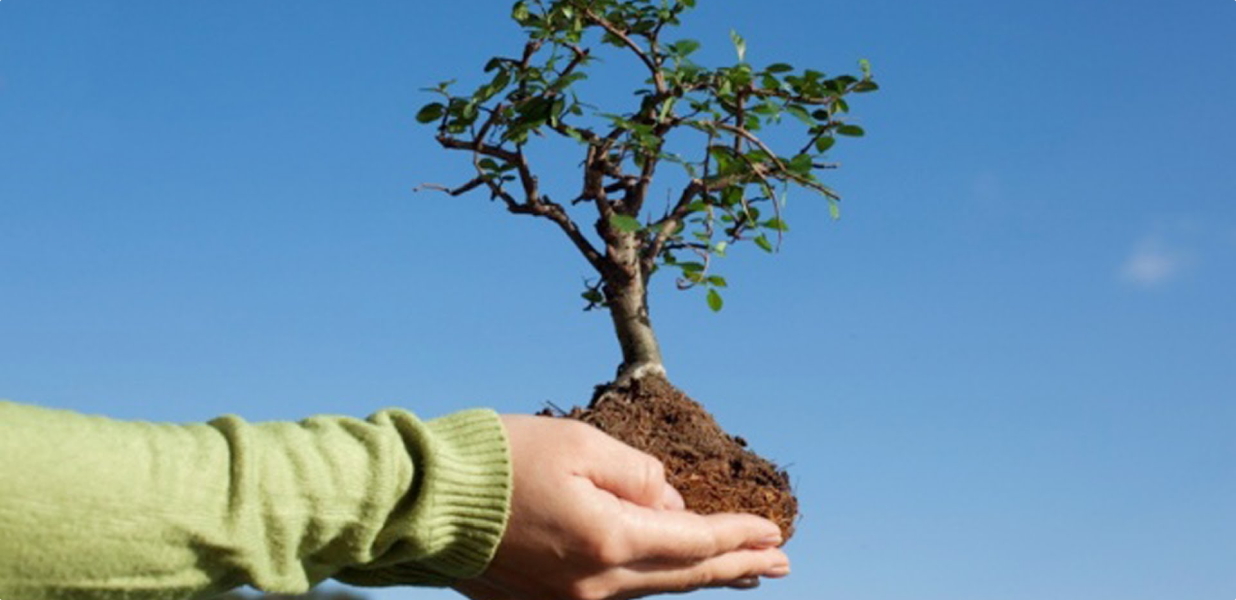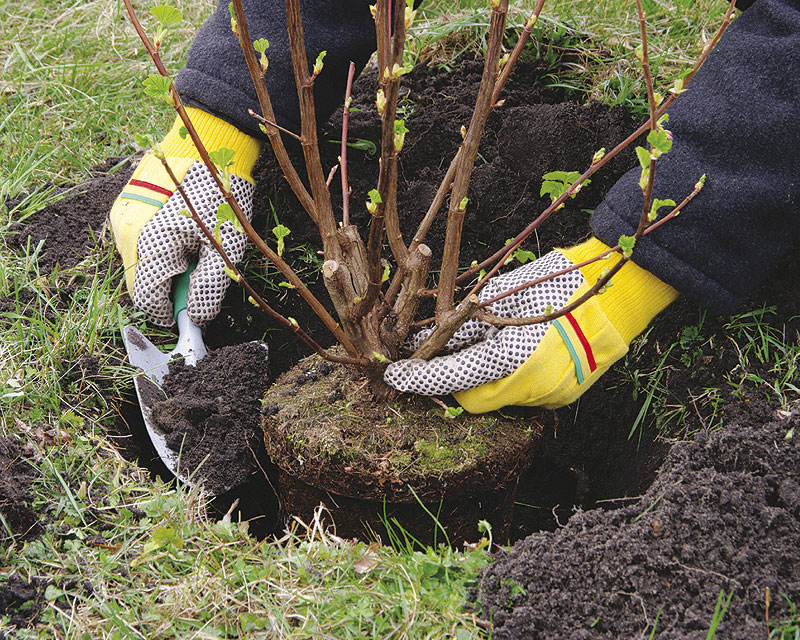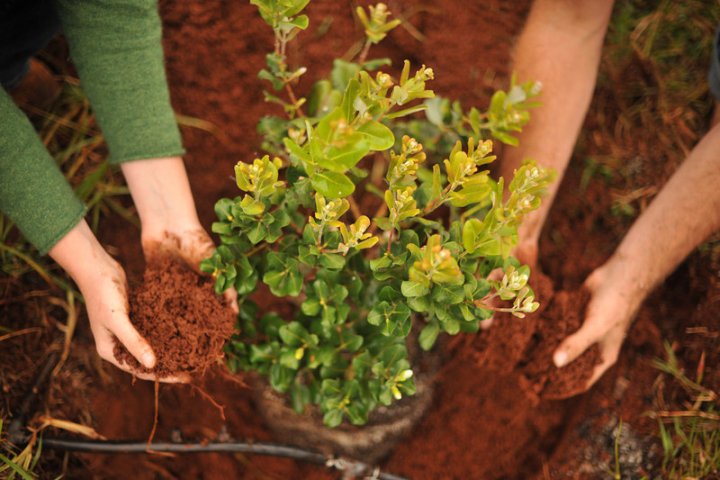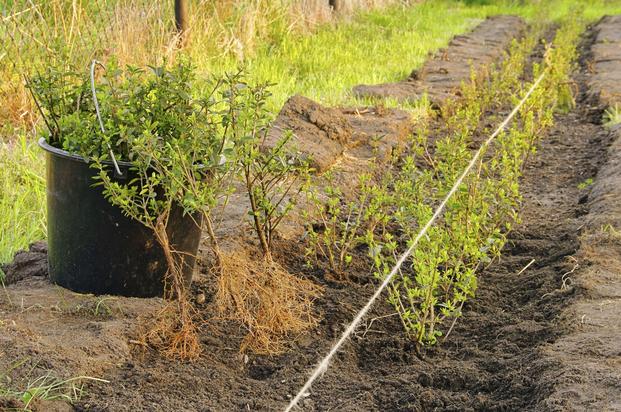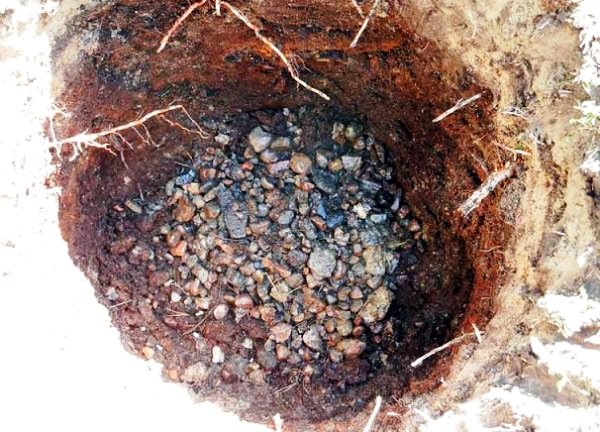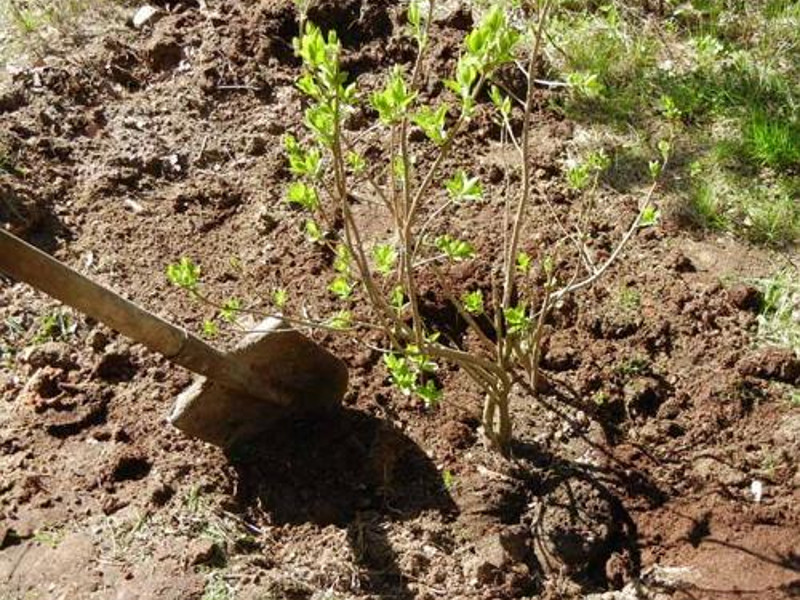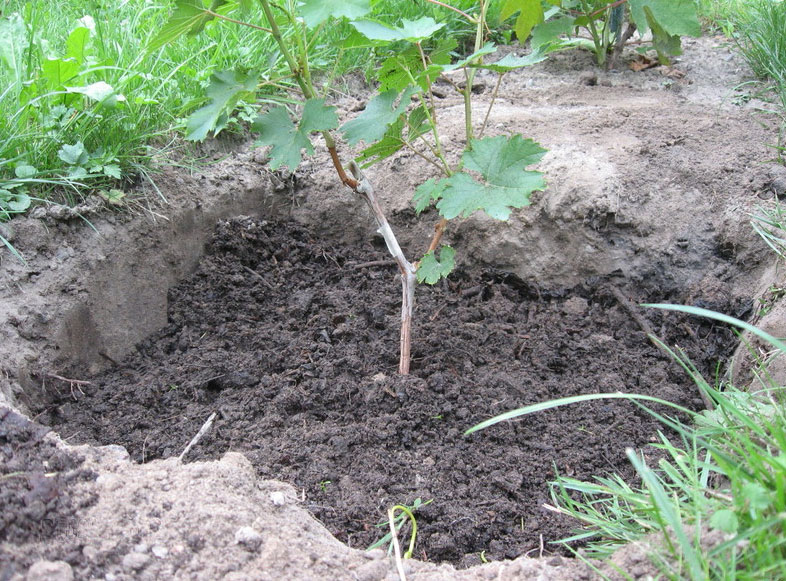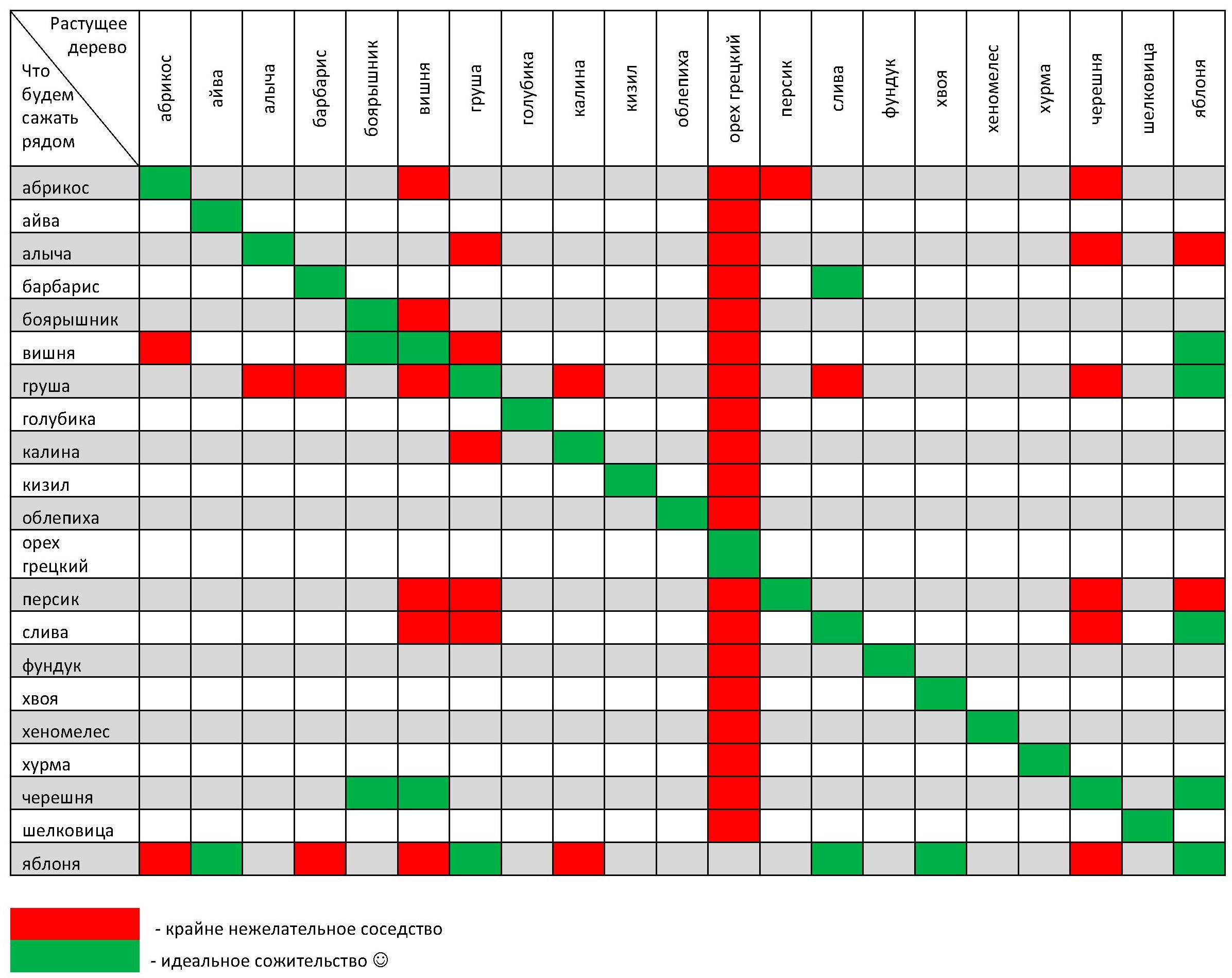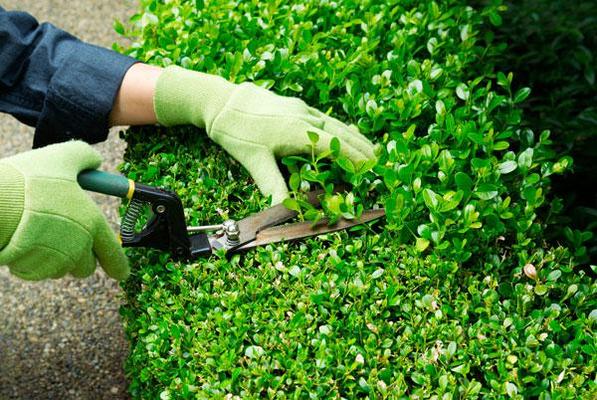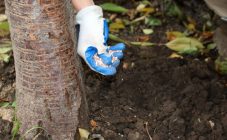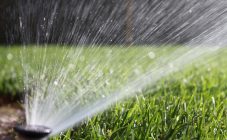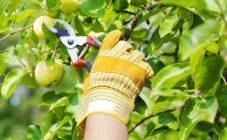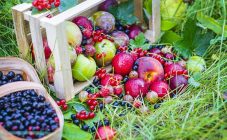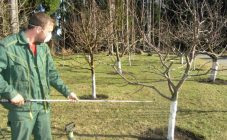Content:
The planting of trees and shrubs on the site is very important as it is less frequent and must be carefully planned. Both the yield and the appearance of the landscape depend on the correctness of the events. It is important to choose healthy planting material and the optimal place for planting it, as well as know the rules for caring for the selected plants.
Landing features
Before planting shrubs or fruit trees on the site, it is worth cultivating the soil and removing weeds. Deep plowing will make the soil looser, as a result of which the planted plants will not only grow faster, but will give the first harvest earlier.
Before planting the plants, acidic soil should be calcified, after which organic matter and ash fertilizers should be applied. You do not need to use fresh manure, because when there is a lack of air, it releases substances poisonous to plants. The planting of shrubs on the site is carried out taking into account the features of the relief, the location of groundwater, protection from drafts. The correct choice of location should assume good illumination and the impossibility of flooding by groundwater even in spring. A gentle slope would be an ideal place to start a garden, but it is much more difficult to achieve positive results on flat terrain.
According to the reviews of experienced gardeners, planting material is best planted on the southern side of the site, in extreme cases, in the southeast and southwest. Before laying the future garden, they clearly draw all the nuances and plan the plantings. Each group of plants must be compatible with the neighboring one. The recommended distances for each shrub or tree must be followed exactly. If the tree is single or plantings are rare, then there is a high probability of sunburn, frostbites.
Time to board
Planting of ornamental shrubs in the spring is carried out at the same time as fruit and berry. You need to proceed from the fact that when the leaves are already blooming, the plant will take root much worse. Therefore, the spring planting period is rather short in comparison with the autumn one. In addition, nurseries try not to leave seedlings to winter in the field, and therefore the range of plants on the autumn market is gorgeous.
The optimal time to plant trees and shrubs depends on the region and climatic conditions. In one case, spring planting is promising, because in the fall, frosts may suddenly begin, and the plants will not have time to take root, and in the other, the work should be carried out in the fall, because in the spring frosts are quickly replaced by heat, which also negatively affects survival rate. Experienced gardeners have noticed that it is better to plant trees in the spring, while autumn is the ideal time for shrubs.
Prikopka
Upon arrival at the site, the seedling should be dug in as soon as possible.To do this, a ditch is dug with one vertical wall and the other inclined at an angle of 30 °. Plants are placed there, the roots of which are sprinkled with soil. In this position, shrubs and trees can remain until the moment when it becomes possible to plant them in a permanent place. In this case, the bush will be alive and will not lose the ability to take root on the site.
Seat selection
First of all, it is necessary to assess the conditions and the place where the orchard will be planted. Determine if there is shading, waterlogging, the type of soil and the supply of nutrients in it. Based on this, a suitable assortment of plants for a given area is determined. Novice gardeners make a common mistake and start planting plants too close to each other, regardless of their size in adulthood. To avoid this, a theory has been developed, according to which it is necessary to add the height of two adult trees growing side by side and divide it in half. The result obtained will be the distance that must be left between them. For shrubs, the rule is similar, only the result must be divided by 3.
For planting shrubs and trees in the garden, the most suitable scheme is chosen:
- Group;
- central location;
- chess order;
- planting in rows.
Preference is given to one of them, depending on the area of the site, growing conditions and the range of selected plants.
Preparing pits
The size of the hole for planting is selected depending on the type of root system. However, even in plants with a large root system, the depth of the planting pit rarely exceeds 1 meter. The best option is from 50 to 80 cm. But they try to make the width as much as possible (naturally, within reasonable limits). The fact is that it is from the upper layers that trees draw the necessary nutrients, interact with beneficial bacteria and fungi.
Along the perimeter of the future hole, the top layer of soil is cut with a bayonet shovel. For trees, the perimeter is taken equal to 1 meter, and for shrubs - up to 60 cm. The fertile layer is carefully removed and folded onto the side of the future pit. The underlying soil is also removed and folded separately, on the other side of the hole. Sheer walls are formed, and the bottom is loosened to a depth of 15 cm. If loamy soil predominates on the site, then a drainage layer must be laid at the bottom.
Digging trenches is carried out according to the same rules. A distinctive feature is the correct drainage, which is done only in the lowest place of the entire length.
Planting seedlings
When planting seedlings with an open root system, a crushed fertile layer is first laid on the bottom so that it fills the volume by a third. The land that is folded on the other side requires refinement and additional fertilization. Subsequently, it is used to cover the seedling.
Plants are taken out of the ditch and placed in the middle of the hole. Make sure the roots feel free. If necessary, they are trimmed. The seedling is covered in such a way that the root collar is located above the ground. At the moment when the hole is covered by a third of earth, it is watered abundantly, holding the seedling, and then they continue to fall asleep with dry soil. This method guarantees the best survival rate of trees and shrubs, as well as avoids the formation of excessive dirt on the site.
Plants with a closed root system are planted almost all year round.In winter, it is preferable not to plant small shrubs and seedlings, but large-sized planting material in our country was planted for a long time in winter.
Before planting, the acquired planting material is removed from the container and the roots are examined. If they have gone beyond the earthen coma, then they should be cut with a sharp knife. Further actions are no different from planting open-root plants. In order for the seedlings to take root better, their root system should be treated with a root stimulator, for example, "Kornevin".
Securing the seedlings
Under natural conditions, a tree or bush is kept upright and does not fall due to its powerful root system. As for the seedlings, they have not yet formed such a reliable support, therefore it is required to install additional fortifications for them. Shrubs are more resilient after planting because their center of gravity is closer to the ground due to their small growth. But the trees must be properly secured.
Trees that have been planted with an open root system are attached to one support installed at the time of planting at the bottom of the hole at a distance of 15 cm from the center. But plants with a closed root system are preferable to attach to a pyramid made of three supports. The situation is more complicated with large trees. For them, you should immediately purchase the Cobra safety system, designed for seedlings.
Planting large trees
The most responsible and laborious is the planting of large mature trees. Moreover, this procedure is not cheap. But it allows you to quickly achieve the desired decorative effect on the site and not wait until the seedlings grow up.
Transplanting large trees in winter together with a frozen lump of earth brings more positive results than a similar procedure carried out in the warm season. In this case, the air temperature must be at least -15 ° C.
When to plant fruit trees and shrubs in spring? A transplant is allowed only until the leaves begin to bloom. During this period, it is quite difficult to dig a plant out of frozen ground. In addition, if the soil is already beginning to thaw, the seedling must be additionally packed in a container specially designed for this, so that the earthy ball does not crumble. Typically, April is the final month for spring planting. Grapes are just beginning to be planted at this time. In the cold ground, and even more so in the fall, a young stalk simply will not take root.
Planting work in autumn takes a long time until unfavorable weather conditions come. It should be borne in mind that newly planted trees and shrubs need insulation of the root system. At this time, transplantation with a frostbitten lump of soil is widely used, due to which packing in a special container is not required, and the procedure becomes much cheaper. In order for the seedlings to take root as best as possible, leading experts recommend using the lunar calendar and strictly follow its recommendations.
For an autumn transplant, they are categorically not suitable:
- Lombardy poplar;
- black alder;
- white acacia;
- oak and other trees that shed their foliage in the fall.
Transplanting in adulthood is best tolerated by plants such as:
- Linden;
- poplar;
- Apple tree;
- pear;
- spruce;
- fir;
- thuja;
- juniper;
- mulberry;
- Rowan;
- ash;
- chestnut, etc.
It is not recommended to replant mature birch, elm and pine trees. The care of newly planted large trees must be careful and last for several years.
The choice of planting material
In European nurseries, seedlings for sale are grown in containers. The whole process has been brought to perfection, because the survival rate of such shrubs and trees is very high. In our nurseries, it is very costly to carry out such events due to the peculiarities of the climate. Therefore, if a gardener comes across planting material, the root system of which is enclosed in a container, then most likely it was brought from abroad. Due to the fact that such seedlings had a chance to grow in milder climatic conditions, their survival rate leaves much to be desired.
Domestic seedlings grown in our nurseries are better adapted to the climate and have already passed a kind of selection. They take root perfectly and begin to bear fruit faster. Before you buy seedlings in the nearest nursery, you should make sure that they were grown exactly there, and they were not purchased elsewhere, and then planted for growing. Otherwise, it will take a very long time to wait for the harvest, and the plant itself will be sick.
Planting table for trees and shrubs
How to properly arrange berry bushes on the site? When planning and laying out a garden, it is worth considering not only the above recommendations, but also the compatibility of some trees and shrubs. The fact is that not all of them can harmlessly exist next to each other and at the same time yield crops or simply decorate the site with their appearance. To avoid disappointment, you should always use the table below to properly plant trees and shrubs.
A gardener who has at least a hundred square meters of free land tries to ennoble it and get the maximum benefit from it. Each plant has its own requirements and features of agricultural technology. They should be taken into account, otherwise the work done may go down the drain. However, with the right approach and some effort, the result will surely pleasantly surprise not only the hosts, but also the guests.
